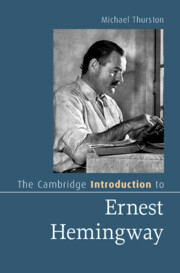Refine search
Actions for selected content:
258 results
20 - Reimagining the First World War in Contemporary British-Arab Writing
- from Part IV - Pathways and Legacies: 1945–2020
-
-
- Book:
- The Cambridge Companion to British Literature and Empire
- Published online:
- 20 November 2025
- Print publication:
- 04 December 2025, pp 293-306
-
- Chapter
- Export citation
Introduction
-
-
- Book:
- Hunger Redraws the Map
- Published online:
- 01 November 2025
- Print publication:
- 20 November 2025, pp 1-17
-
- Chapter
- Export citation
4 - Individual Strategies of Survival
-
-
- Book:
- Hunger Redraws the Map
- Published online:
- 01 November 2025
- Print publication:
- 20 November 2025, pp 115-143
-
- Chapter
- Export citation
8 - Wartime Honeymoon, 1914–1917
-
- Book:
- Distant Friends and Intimate Enemies
- Published online:
- 30 October 2025
- Print publication:
- 20 November 2025, pp 160-178
-
- Chapter
- Export citation
3 - The Politics of Food
-
-
- Book:
- Hunger Redraws the Map
- Published online:
- 01 November 2025
- Print publication:
- 20 November 2025, pp 74-114
-
- Chapter
- Export citation
11 - Collective Remembering/Collective Forgetting
- from Part IV - Legacy
-
-
- Book:
- Debussy Studies 2
- Published online:
- 15 November 2025
- Print publication:
- 06 November 2025, pp 267-285
-
- Chapter
- Export citation

Hunger Redraws the Map
- Food, State, and Society in the Era of the First World War
-
- Published online:
- 01 November 2025
- Print publication:
- 20 November 2025
1 - The Old Guard
-
- Book:
- The City's Defense
- Published online:
- 09 October 2025
- Print publication:
- 23 October 2025, pp 27-65
-
- Chapter
- Export citation
Chapter 1 - Life
-
- Book:
- The Cambridge Introduction to Ernest Hemingway
- Published online:
- 15 September 2025
- Print publication:
- 02 October 2025, pp 3-20
-
- Chapter
- Export citation
Chapter 2 - Contexts
-
- Book:
- The Cambridge Introduction to Ernest Hemingway
- Published online:
- 15 September 2025
- Print publication:
- 02 October 2025, pp 21-30
-
- Chapter
- Export citation
Chapter 3 - Crafting a Style
-
- Book:
- The Cambridge Introduction to Ernest Hemingway
- Published online:
- 15 September 2025
- Print publication:
- 02 October 2025, pp 31-63
-
- Chapter
- Export citation
Chapter 4 - Consolidating a Career
-
- Book:
- The Cambridge Introduction to Ernest Hemingway
- Published online:
- 15 September 2025
- Print publication:
- 02 October 2025, pp 64-86
-
- Chapter
- Export citation
2 - Mobilization
- from Part I - Promising Environments: Material Premises of Growth and Power
-
- Book:
- Burning Swamps
- Published online:
- 06 September 2025
- Print publication:
- 25 September 2025, pp 60-94
-
- Chapter
- Export citation

The Cambridge Introduction to Ernest Hemingway
-
- Published online:
- 15 September 2025
- Print publication:
- 02 October 2025
Chapter 31 - War and Politics
- from Part VIII - Ideas, Beliefs and Interventions
-
-
- Book:
- Schoenberg in Context
- Published online:
- 04 September 2025
- Print publication:
- 04 September 2025, pp 308-315
-
- Chapter
- Export citation
Chapter 2 - In the Trenches of Public Opinion
-
- Book:
- Manufacturing Dissent
- Published online:
- 03 October 2025
- Print publication:
- 21 August 2025, pp 58-86
-
- Chapter
- Export citation
6 - Conclusion
-
- Book:
- The Colonial Way of War
- Published online:
- 04 September 2025
- Print publication:
- 21 August 2025, pp 306-314
-
- Chapter
- Export citation
Chapter 3 - World War Gothic
-
- Book:
- Manufacturing Dissent
- Published online:
- 03 October 2025
- Print publication:
- 21 August 2025, pp 87-122
-
- Chapter
- Export citation
From Austerity to the Pandemic and Beyond: Learning from Commemoration 2014–2019
- Part of
-
- Journal:
- Transactions of the Royal Historical Society / Volume 3 / December 2025
- Published online by Cambridge University Press:
- 15 August 2025, pp. 393-404
- Print publication:
- December 2025
-
- Article
-
- You have access
- Open access
- HTML
- Export citation
Chapter 1 - Sons of Sunny Italy
-
- Book:
- Emigrant Soldiers
- Published online:
- 05 June 2025
- Print publication:
- 26 June 2025, pp 1-29
-
- Chapter
- Export citation
